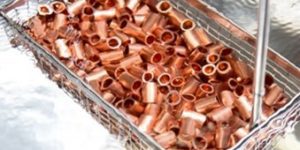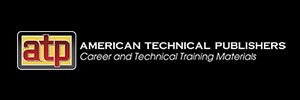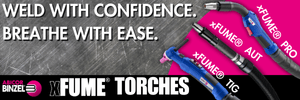TOUGH TIMES: THE IMPERATIVE FOR PROCESS CONTROL
Mike Riley presents a simple model from industrial metrology supplier Renishaw Inc. that explains the sources of process non-conformance and the process control methods to address them – something manufacturers will need if and when times get tough.
Posted: September 2, 2011
• Tool setting establishes and stores the length and diameter of tools in the CNC so that tools are introduced to the part and cut close to nominal, avoiding manual ‘cut and measure’ activities and operator errors while keying height offsets – a major source of crashes in many shops.
The cost reduction benefits of the process setting layer are:
• Part and tool setting reduce setting times by up to 90 percent.
• Probing is automated and more repeatable than manual methods.
• A more reliable setting process means less downtime once production starts.
• When tools are replaced, re-setting is also faster and less error-prone.
• All this means more time to make parts.
IN-PROCESS CONTROL
Often the least exploited and least well understood, these controls tackle the inherent sources of variation in all machining processes – namely tool wear and the impact of temperature and heat flows. On-machine probing is the only cost-effective way to monitor the in-process state of the component. It gives the machine the intelligence needed to make its own decisions by constantly centering the process and eliminating the adversity of process drift. This results in a consistently capable ‘green button’ process that requires less manpower and produces less rework and scrap.
In-process control can only be successful if the lower Pyramid layers are in place. If the other sources of variation are not under control, in-process control will fight an uphill battle against random forces that it cannot tackle. Attempting to automate a process in a chaotic environment with unreformed manual processes is folly. What sorts of controls are involved in this layer?
• There is no point of measuring every feature on the part if they are all made with just a few tools. A better approach is to spend as little time as possible checking a critical feature for each tool by using a touch probe and updating the tool offsets from the errors that are measured. An inspection probe is the way to control tools once cutting has started – not a tool setter – as it directly measures the output that you want to control: the size that the tool is cutting.
• Control roughing tools, not just finishing tools. Although unseen by post-process inspection, roughing tools perform the vital task of leaving the correct amount of material for the finishing tool to remove. If the rough feature is inconsistent, then the finishing cut depth will vary and affect tool deflection and surface finish.
• Monitor thermal drift by re-datum of the spindle position, rotary table center-lines or pivot points at regular intervals, especially before critical finishing operations.
• Check delicate tools for breakage after each cutting cycle to ensure that a single broken tool does not result in further damage to tools and parts. This increases confidence in unmanned machining.
• Put logic in the program to react to unexpected events. If parts are out of tolerance but with metal on, then call up another finishing pass. If a tool breaks, call up a sister tool or alert the operator. Do not accept a bad result at face value; wash the part and re-measure to ensure you’re not probing on swarf.
• Monitor the process status and alert the operator if errors occur.
• Store in-process measurements and offset updates for subsequent traceability.
In many circumstances, in-process control yields the biggest cost savings of any of the Pyramid layers, particularly if processes involve high levels of tool wear and extended cycle times:
• Reduced capital costs – increase throughput without investment in new capacity.
• Increased automation – reduced direct labor costs and unproductive machine downtime.
• Reduced human error – repeatable measurement and automated feedback.
• Less scrap, rework and concessions – less variation, higher process capability and ‘right first time’.
POST-PROCESS MONITORING
The top layer of the Pyramid provides the final assessment of process outcomes. Verification can be performed on the machine tool itself using a probe, at the machine using hand gauges or articulating arms, or on a CNC offline device such as a CMM. These are reactive controls that measure too late to influence the component being measured, unless a rework process is called up.
Controls in the post-processing monitoring layer are:
• On-machine process verification uses a probe to measure features on the part while it is still in the machining fixture. Checking the part before it is moved, essentially verifying that the process has performed as expected, gives confidence about the part’s conformance prior to any further operations. This approach makes the most sense with large, high-value parts. ‘CMM style’ checks can also be performed on parts, including geometric dimensions and tolerances, although the precision and traceability of machine tool measurements will be lower than those on a CMM under controlled temperature conditions. The cycle times on CMMs equipped with the latest measurement technologies will typically be much shorter.
• Offline part verification uses a CMM to fully inspect against the specification with 3- and 5-axis scanning technologies for faster and more comprehensive measurement of complex shapes and more sophisticated analysis and reporting than on-machine techniques. CMMs are often used in temperature-controlled environments for greater accuracy, though this may slow any feedback to the process. Measurements and point data can also be stored for long-term traceability.
New 5-axis scanning technology reduces manpower and the costs of conventional post-process inspection techniques with radically faster, flexible and fully automated measurement of complex features in all orientations with infinite positioning for greater throughput without compromising accuracy. Its multi-sensor platform enables the automation of verification processes, such as surface finish measurement. The shorter cycle times reduce the need for rotary tables and capital expenditure.
SUMMARY AND RECOMMENDATIONS
This model provides a systematic approach to eliminating variation in machining processes. Without making any fundamental changes to the machining process, improving process control can yield substantial recurring cost savings through greater automation and lower quality costs. The level of investment required to implement such controls is relatively low, with a payback of just a few months. Eliminating variation from processes also increases the returns on any future capital investments that are made.
These controls should be implemented from the bottom up, as each layer builds on the one below to progressively reduce variation. Widely implementing the process foundation layer is an excellent first step, followed by implementing probing to automate setting processes. In-process control is more process-specific and makes sense when there are many similar machines and processes to share the improvements across. If each machine in your facility is different, implementing this layer may prove time consuming. A better strategy is to rationalize your machining platforms and implement these higher level controls on new processes so that any learning can be replicated on other new parts.
Replacing post-process measurement on your CMMs with on-machine measurement is generally not the best strategy. The machine’s primary purpose is to make good parts, so any verification done on the machine should be focused on the process just completed rather than checking every feature on the part. On-machine verification makes most sense where parts are very large and complex, where a capable offline inspection process doesn’t exist, or where the lead time and cost of moving parts is high.
Attention must be paid to the accuracy of on-machine measurement, particularly the effects of temperature. In most circumstances, a CMM that employs high speed scanning technology is generally the most cost effective way to verify component geometry and surface conformance. – Renishaw plc
I believe that competitive markets are placing enough pressures on manufacturers to address their productivity and costs, whether or not we face some tough economic circumstances ahead. Applying the controls outlined in this model is a cost-effective way to place your business in a strong position, regardless of the operating conditions that exist now or in the future. What do you think?
Jeff Seliga is the marketing services manager at Renishaw Inc., 5277 Trillium Boulevard, Hoffman Estates, IL 60192, 847-286-9953, Fax: 847-286-9974, [email protected], www.renishaw.com.















